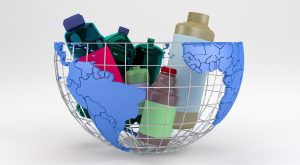Achieve a carbon-neutral, environmentally sustainable, toxic-free and fully circular economy by 2050 at the very latest. This is the goal that the Environment, Public Health and Food Safety Committee of the European Parliament has set itself when it approved the report on the new Circular Economy Action Plan.
To this end, members of the European Parliament have called for binding targets to be set for 2030 and urged the European Commission (EC) to introduce harmonised, comparable and uniform circularity indicators for material and consumption footprints by 2021.
Other topics of interest: What is the New Plastics Economy and how has the debate on plastics changed
While it is becoming increasingly clear that companies need to consider their social and environmental impact, and many have already adopted the circular model, achieving a real circular economy will be very difficult without being able to measure its parameters and companies’ progress in this regard.
Circulytics, the tool that measures companies’ circularity
In response to this need, the Ellen MacArthur Foundation has made Circulytics available to companies, a measurement tool that supports the transition of a company towards the circular economy, regardless of its industry, complexity, and size. This company-level measurement tool reveals the extent to which a company has achieved circularity in all its operations. The tool uses the following indicators:
- It measures the entire circularity of a company, not just limited to products and material flows.
- It supports decision-making and strategic development for the adoption of the circular economy.
- Identifies strengths and highlights areas for improvement.
- Provides optional transparency to investors and customers on a company’s adoption of the circular economy.
- Provides unprecedented clarity on circular economy performance, opening new opportunities to generate brand value with key stakeholders.
Large companies increasingly committed to the circular economy
The need to adapt to the circular economy model has resulted in, according to the Ellen MacArthur Foundation, 604 companies registering for the tool, 63% of which are based in Europe and 22% of which have annual revenues of more than $1 billion.
Other topics of interest: Environmental awareness is growing: 60% of consumers consider themselves ‘eco-active’
Large companies, traditionally considered ‘part of the problem’ because of the lack of sustainability of their processes and lack of environmental commitment, are now the first to be involved in this transformation of the model, setting the pace towards the shift to the circular economy. Large companies such as Coca-Cola, Uniliver, HyM or Bridgerstone are already part of Circulytics.







